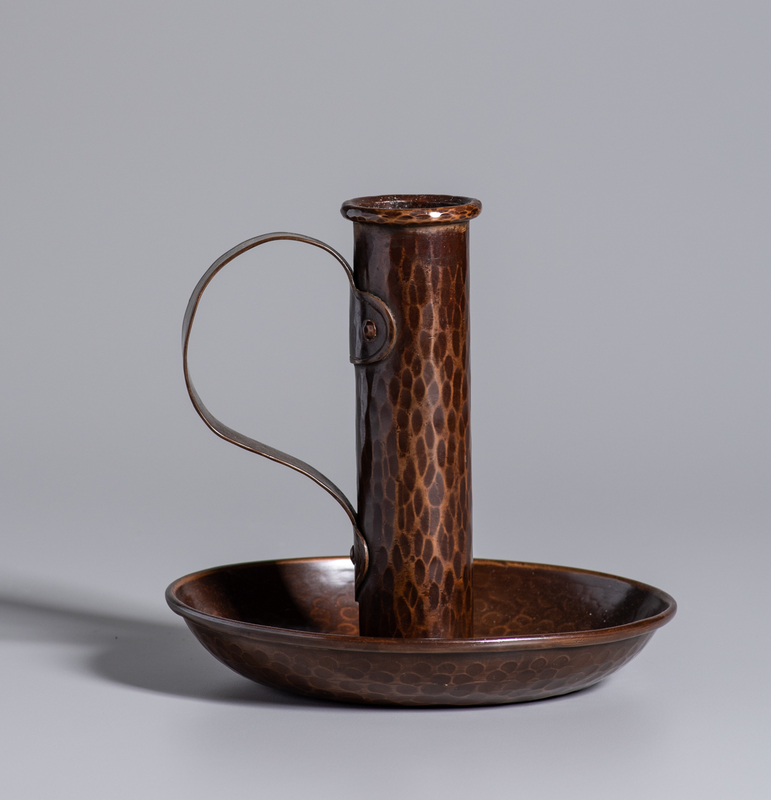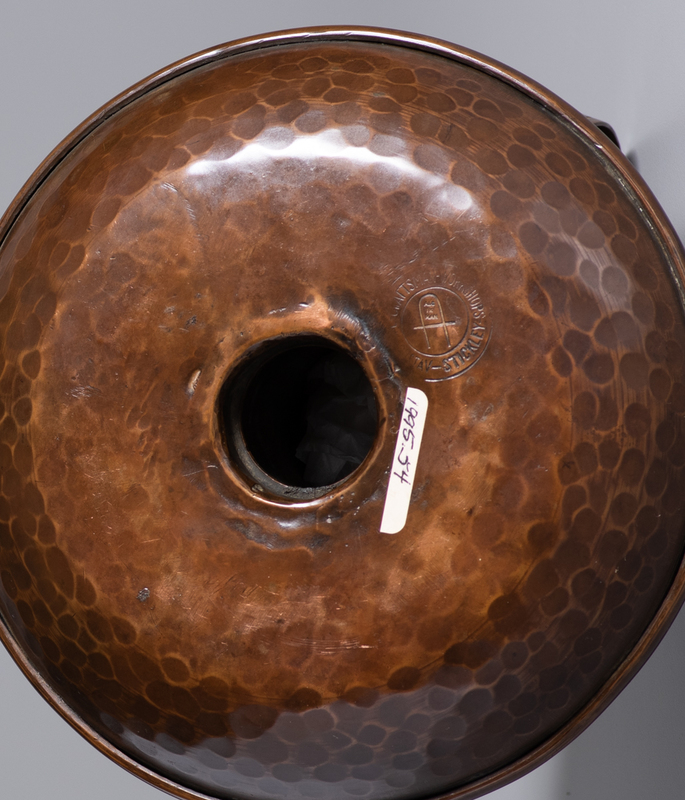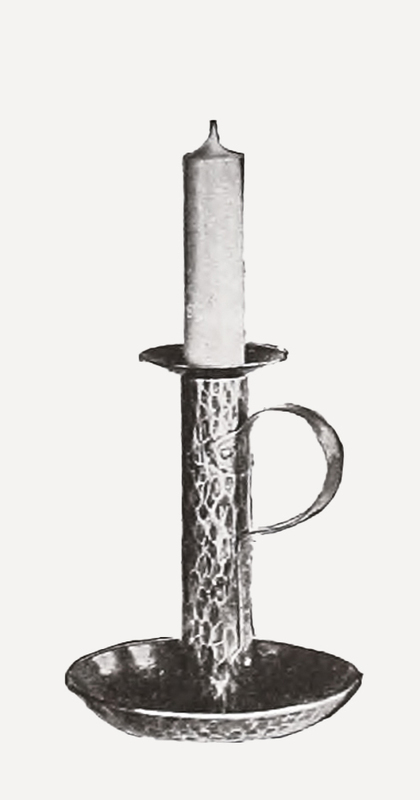Candlestick
Item
Title
Candlestick
Creator
Craftsman Workshops
Date
1905-15 (ca.)
Dimensions
6 1/2 x 7 inches (d)
Medium
Copper
Object No.
1995.54
Credit line
Anonymous Gift
Marks
Stamped on base with shop mark.
Provenance
Gustav Stickley; sold with the contents of Craftsman Farms in 1917 to George and Sylvia Farny; by descent to Cyril Farny; purchased by an anonymous donor on behalf of the Craftsman Farms Foundation.
Description
Although, at first glance, this example resembles Candlestick (no. 74) that Stickley introduced in the April 1912 Craftsman Furniture catalog, the substantial differences of the shaft, the handle, and overall height distinguish this from that cataloged form. Significantly, instead of a flat rim at the shaft that holds a removable bobeche, the rim here is rolled and finished, suggesting that the form was never intended to house that piece. In addition, the handle on the shorter shaft resolves differently than known examples of no. 74, lacking the pronounced vertical portion (or any evidence of it) that descends almost to the base. Instead, the handle ends in a leaf or spade shaped plate, not unlike the treatment of handles in cigar boxes and other forms manufactured as early as about 1904.
It is tempting, because of Stickley's ownership of this candlestick, the early mark, and the lack of known comparable examples, to believe that this may have been an early working through of the ideas that would eventually become Candlestick (no. 74), yet there is no real evidence to support that position. It is equally plausible that Stickley refined an extant form to suit his own needs and directed the metal shop to create this form for him. Until additional documentation is located that sheds light on when this candlestick was made for Stickley, this humble form's significance will necessarily remain speculative.
It is tempting, because of Stickley's ownership of this candlestick, the early mark, and the lack of known comparable examples, to believe that this may have been an early working through of the ideas that would eventually become Candlestick (no. 74), yet there is no real evidence to support that position. It is equally plausible that Stickley refined an extant form to suit his own needs and directed the metal shop to create this form for him. Until additional documentation is located that sheds light on when this candlestick was made for Stickley, this humble form's significance will necessarily remain speculative.



